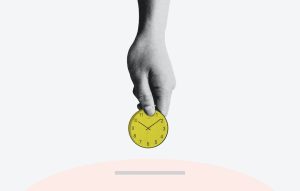Using Forex Best Indicators for Day Trading: Tips and Tricks
Forex trading is a dynamic and fast-paced financial market where traders aim to profit from the fluctuations in currency prices. One of the most common trading strategies used by day traders is technical analysis, which involves the use of various indicators to identify potential trading opportunities. In this article, we will explore some of the best indicators for day trading in forex and provide tips and tricks on how to use them effectively.
1. Moving Averages (MA): Moving averages are widely used in forex trading as they help smooth out price data and identify trends. The most commonly used moving averages are the simple moving average (SMA) and the exponential moving average (EMA). The SMA calculates the average price over a specified period, while the EMA gives more weight to recent price data. Traders often use the crossover of different moving averages (e.g., 50-day SMA crossing above the 200-day SMA) as a signal to enter or exit trades.
2. Relative Strength Index (RSI): The RSI is a momentum oscillator that measures the speed and change of price movements. It ranges from 0 to 100 and is often used to identify overbought and oversold conditions. A reading above 70 indicates overbought, while a reading below 30 indicates oversold. Traders can use the RSI to anticipate potential reversals or confirm the strength of a trend.
3. Bollinger Bands: Bollinger Bands consist of a middle band (SMA) and two outer bands that are standard deviations away from the middle band. They provide a visual representation of price volatility and can be used to identify potential trend reversals or breakouts. When the price moves close to the upper band, it may be overbought, while a move close to the lower band may indicate oversold conditions.
4. Fibonacci Retracement: Fibonacci retracement levels are based on the mathematical sequence discovered by Leonardo Fibonacci. Traders use these levels to identify potential support and resistance areas. The most commonly used Fibonacci retracement levels are 38.2%, 50%, and 61.8%. When the price retraces to one of these levels, it may indicate a potential reversal or continuation of the trend.
5. MACD (Moving Average Convergence Divergence): The MACD is a trend-following momentum indicator that shows the relationship between two moving averages of a security’s price. It consists of a MACD line (the difference between the 26-day EMA and the 12-day EMA), a signal line (9-day EMA of the MACD line), and a histogram (the difference between the MACD line and the signal line). Traders use the MACD to identify bullish or bearish crossovers, as well as divergence between the MACD line and the price.
Now that we have discussed some of the best indicators for day trading in forex, let’s explore some tips and tricks on how to use them effectively:
1. Combine multiple indicators: Indicators work best when used together to confirm signals. For example, you can use moving average crossovers in conjunction with the RSI to increase the probability of a successful trade.
2. Understand the limitations: Indicators are not foolproof and can give false signals. It is essential to consider other factors such as market conditions, news events, and fundamental analysis when making trading decisions.
3. Practice and backtest: Before using any indicator in live trading, it is crucial to practice and backtest your strategy on historical data. This will help you understand the strengths and weaknesses of the indicator and fine-tune your trading approach.
4. Use proper risk management: Indicators can help you identify potential trades, but managing risk is equally important. Set appropriate stop-loss levels and avoid overtrading based solely on indicator signals.
5. Stay updated: As the forex market is constantly evolving, it is essential to stay updated with the latest developments in indicators and trading strategies. Join online communities, read books, and attend webinars to enhance your knowledge and skills.
In conclusion, using the best indicators for day trading in forex can significantly improve your trading success. However, it is important to understand the strengths and limitations of each indicator and use them in conjunction with other tools and analysis methods. Remember to practice, backtest, and manage risk effectively to achieve consistent profitability in your forex trading journey.













